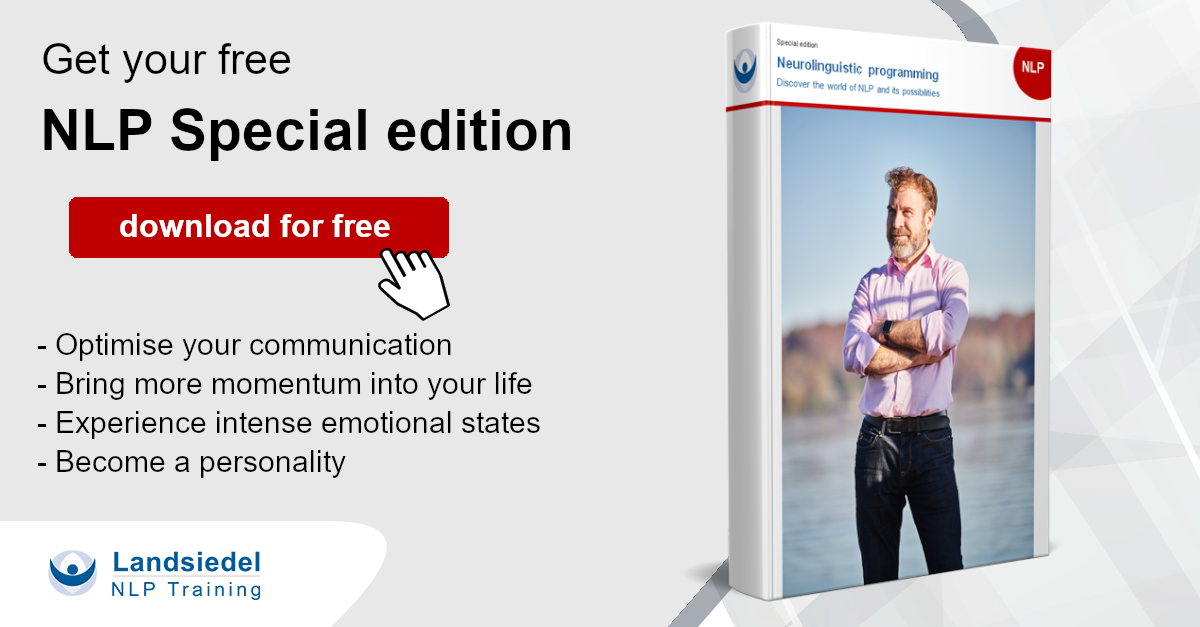Six-Step Reframing
The Six-Step Reframing method is one of the most well-known NLP intervention models. In six steps, behavioral habits can be illuminated and changed. Key active elements are the separating intention from behavior, the NLP Parts Model and the idea of creative parts for new behavior.
The technique is particularly suitable for psychosomatic symptoms, and especially those that are removed from consciousness:
One has no idea why one has the particular symptom. Constant back and forth between consciousness and unconsciousness, between alertness and trance. Each symptom is assigned a symptom-producing part. Distinction between intention and behavior.
Six-Step Reframing - Steps
- Identify the pattern of behavior (X) that is to be changed
Identify the pattern (X) you want to change: I want to stop X, but I can’t. I want to do Y, but something holds me back. - Establishing communication with the responsible part
Establish communication with the part responsible for the pattern. Will the part of me that leads me to do X communicate with me in my consciousness? Pay attention to everything - feelings / images, smells / sounds - what happens internally in response to this question? Establish the "yes / no" meaning of the signal. Increase clarity, volume or intensity for yes and decrease for no. - Separating behavior from positive intent
Separate the behavior, the pattern X, from the positive intent of the part responsible for X. The unwanted behavior is just one way to achieve a certain positive function. Ask the X-part: Would you be willing to let me know what you are trying to do for me with pattern X? If you receive a yes answer, ask the part of his intention. If you get a no-answer, continue with unconscious reframing, with the presupposition of a positive intention. Is this intention acceptable to the conscious self? Would you like to have a part that performs this function? Ask the X part: if there were ways to perform your positive function as well or better than using X, would you be interested in trying it out? - Create new behaviors using the creative part
Find access to a creative part and create new behaviors to perform the positive function. Make yourself accessible to experiences of creativity and anchor these or ask: am I aware of having a creative part? Let the part responsible for X communicate its positive function to the creative part, allow the creative part to invent further possibilities for the performance of this function, and let the part that was responsible for X choose three of them that are at least as good as X or better. Let it send a yes signal every time it selects such an alternative. - Taking responsibility and establish a bridge to the future
Question the part: Are you ready to take responsibility for using the three new alternatives in the appropriate context? This also creates a bridge to the future (future pacing). In addition, at the subconscious level, you can ask the part to identify the sensory cues that trigger the new choices to fully experience how it feels when these sensory cues effortlessly and automatically bring about one of the new choices. - Ecological Check
Does any of my parts have anything against the three new alternatives?
If the reaction is “yes”, go back to step 2.
- The therapist must make sure that there is no competition or power struggle between him and the part.
- The therapist honors the performance of the part and allies himself with the part: if necessary, against the discriminatory remarks of the client.
- The therapist makes sure the part decides if the process should occur within the consciousness or outside of consciousness.
- The therapist uses the greatest care in establishing clear contact with the part.
